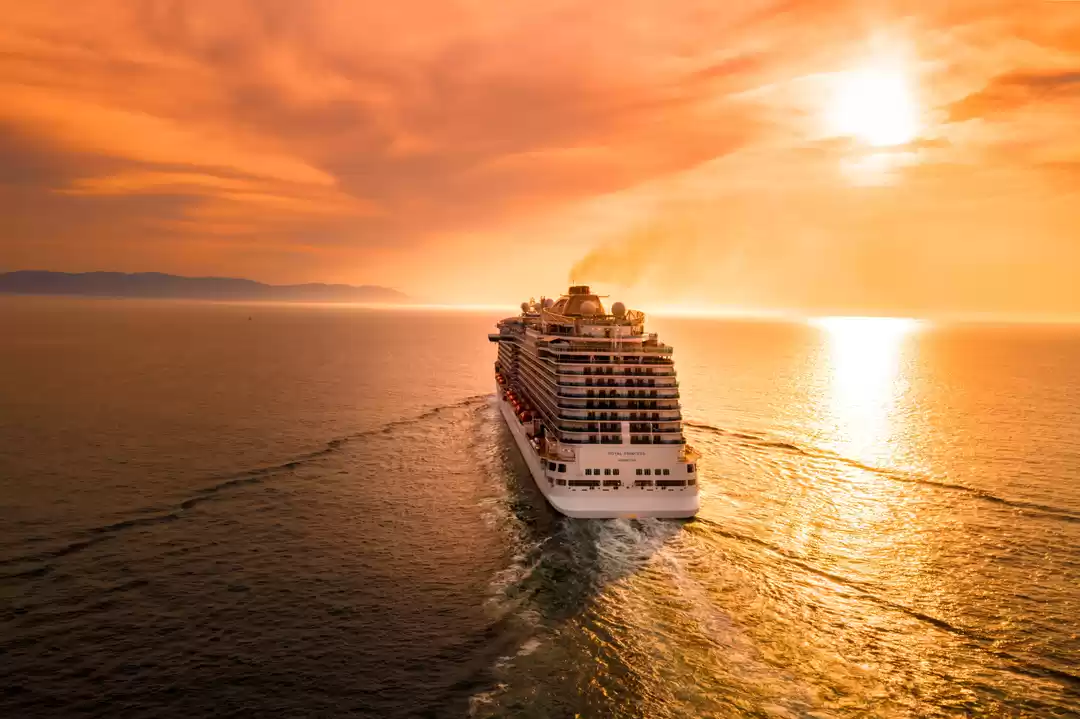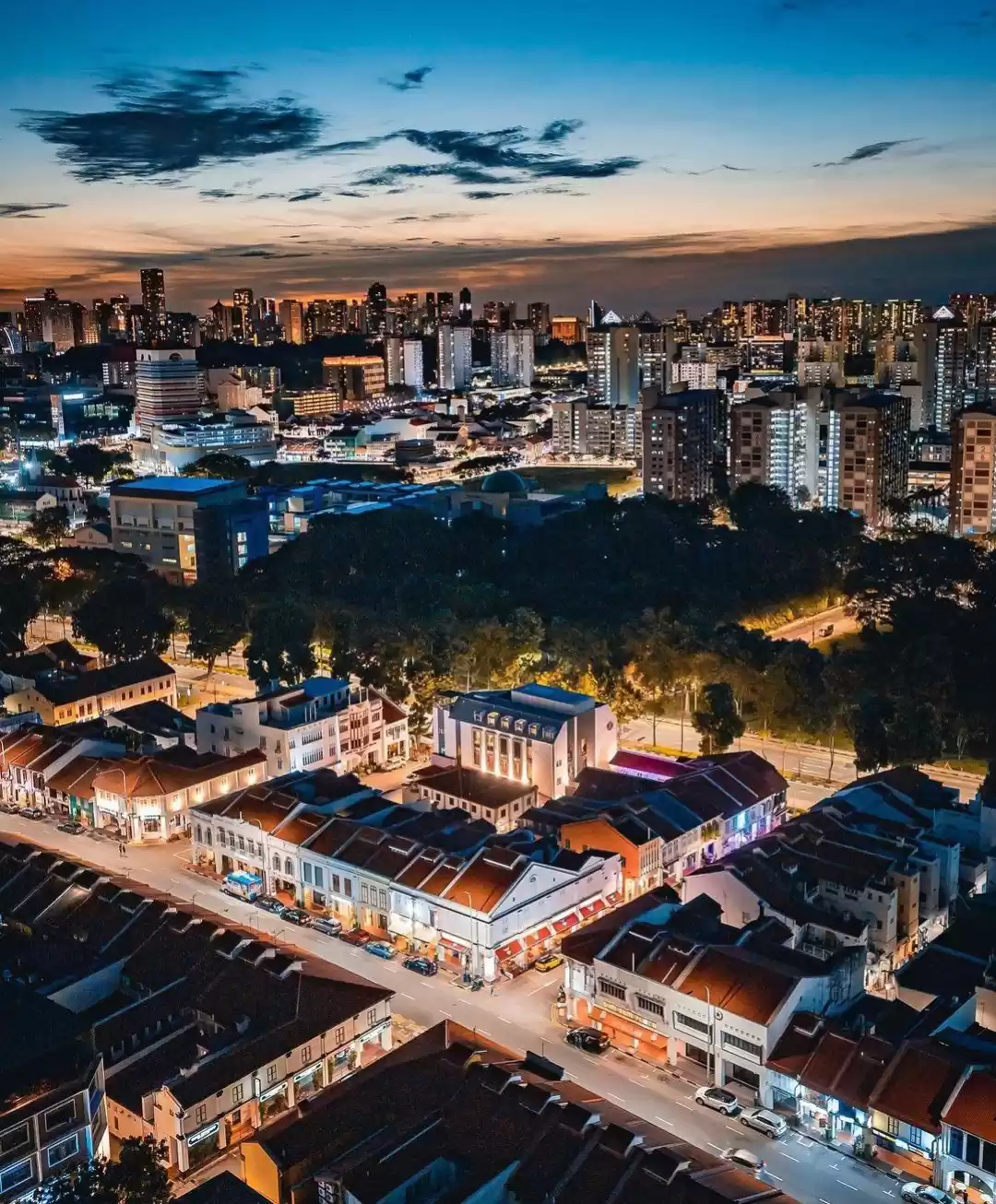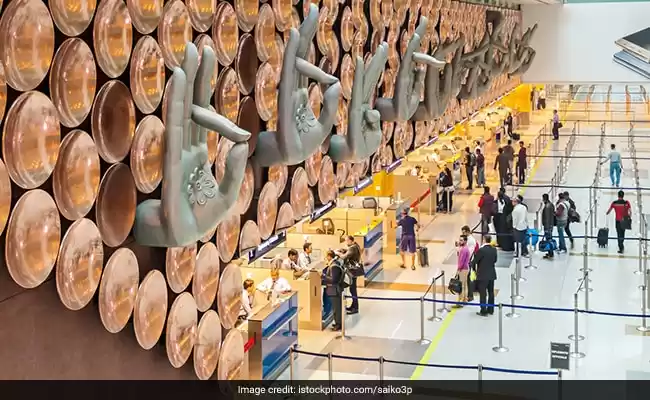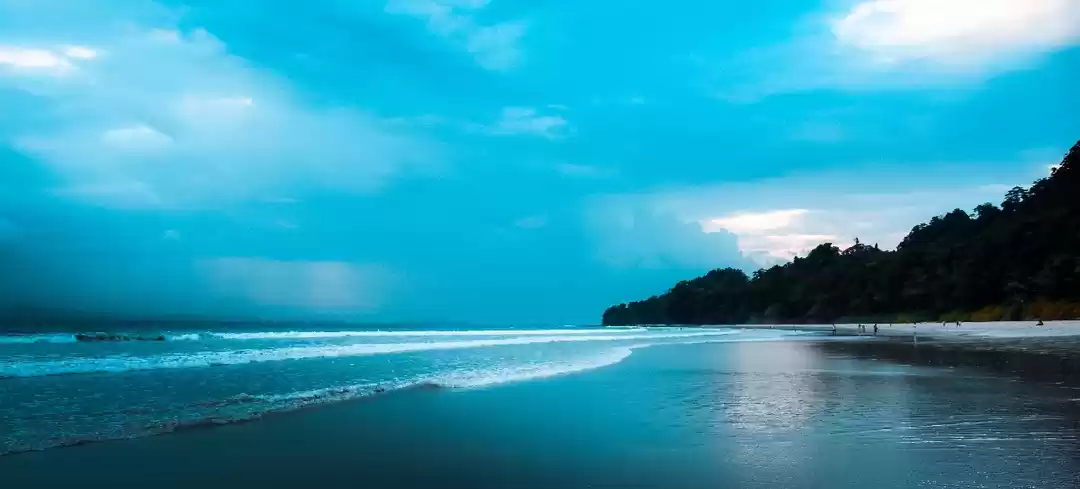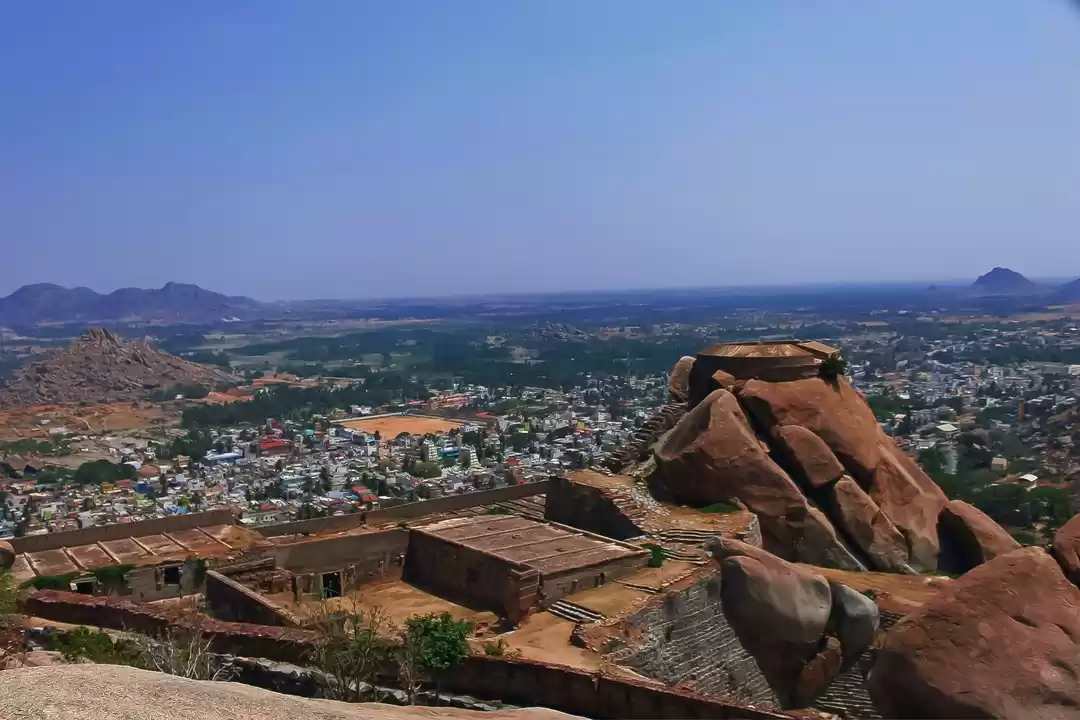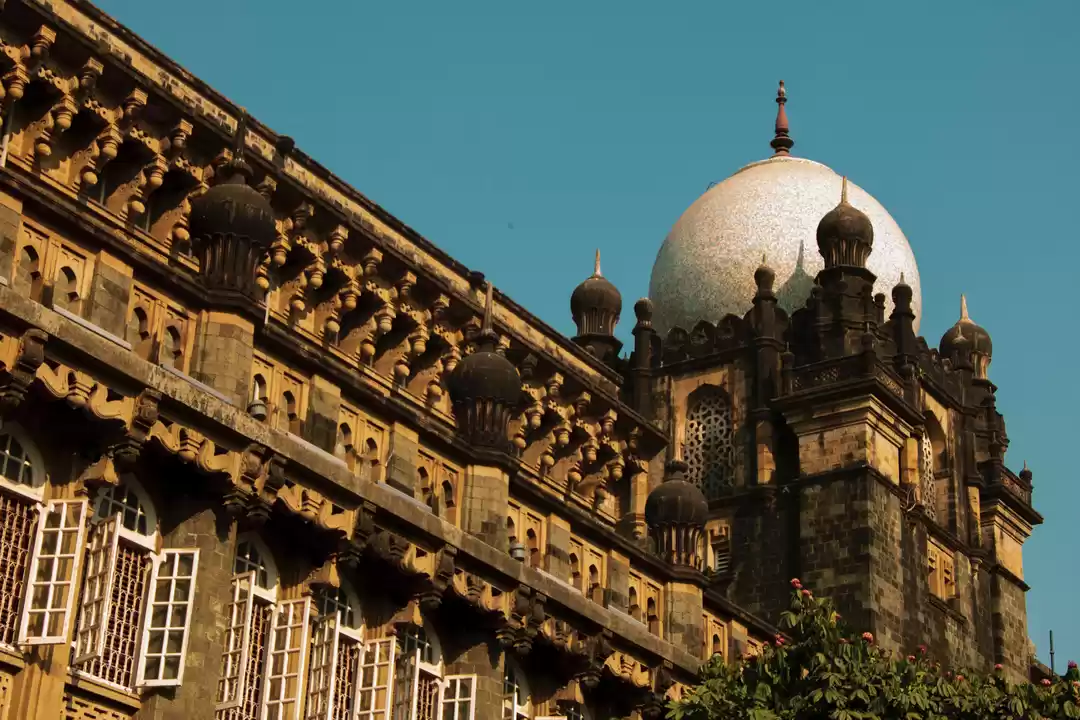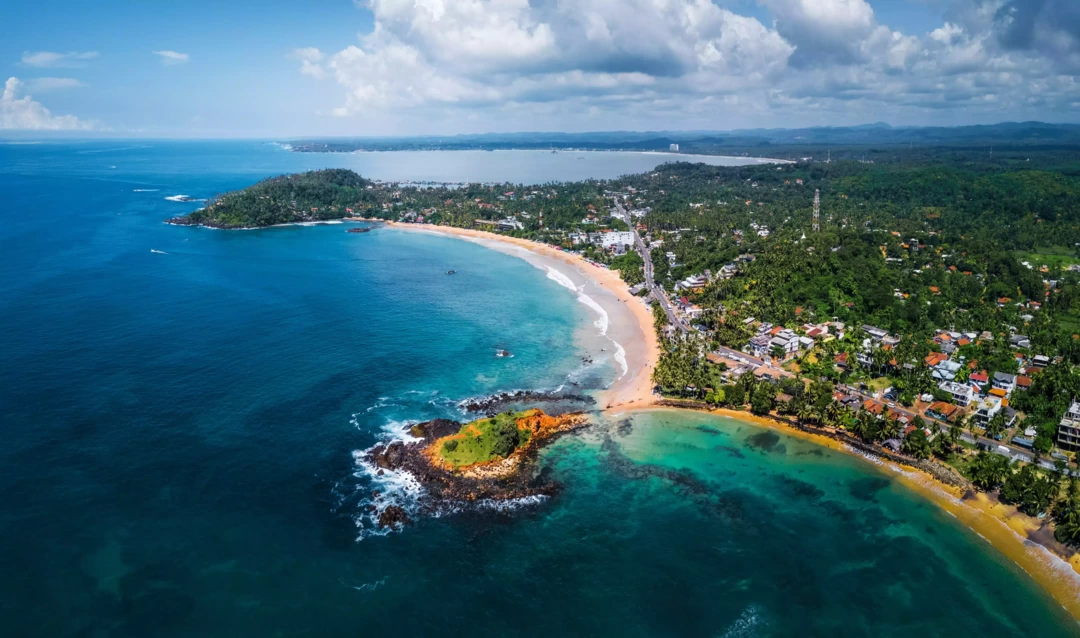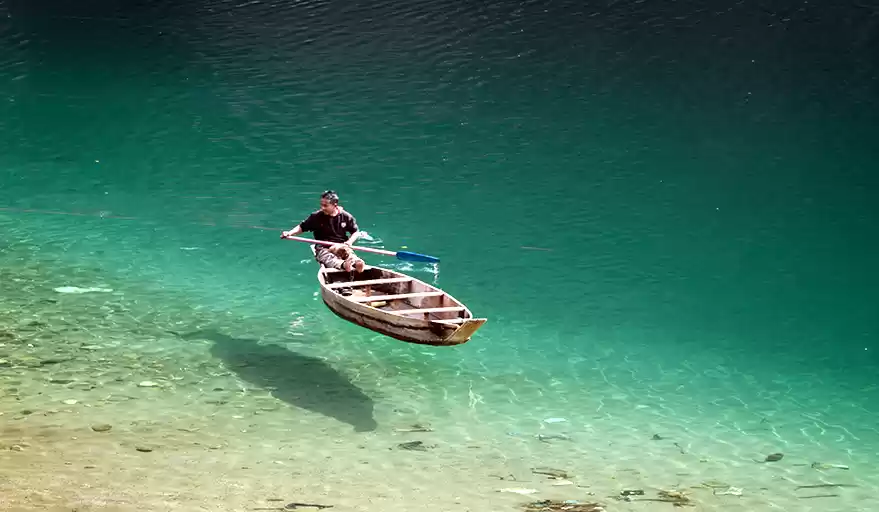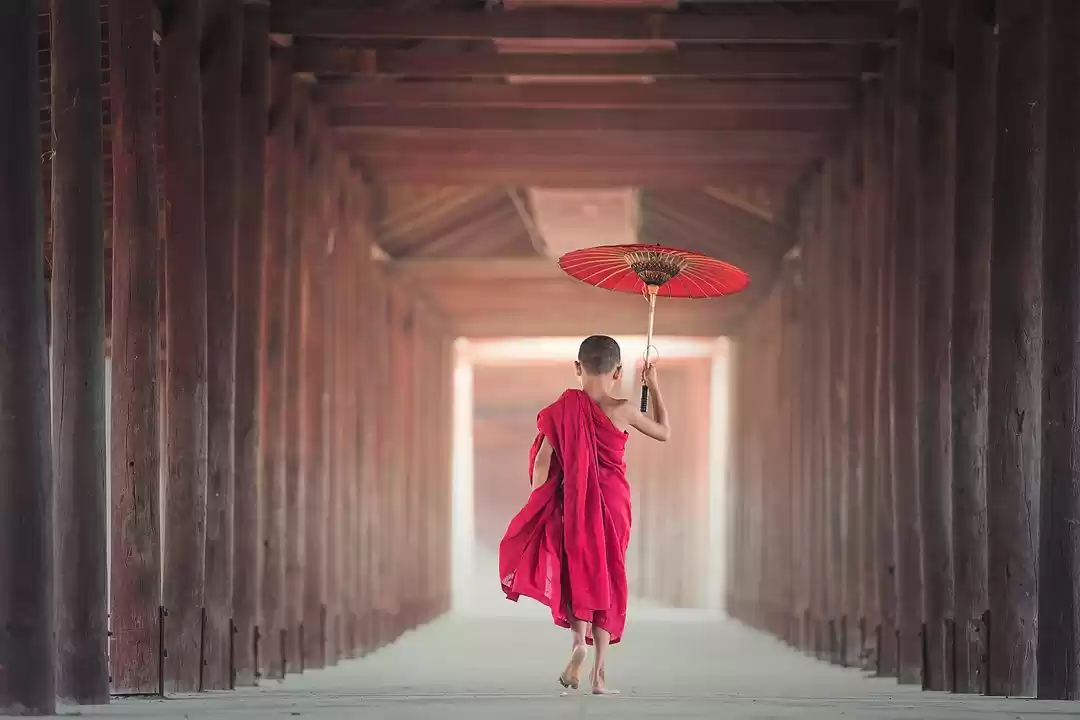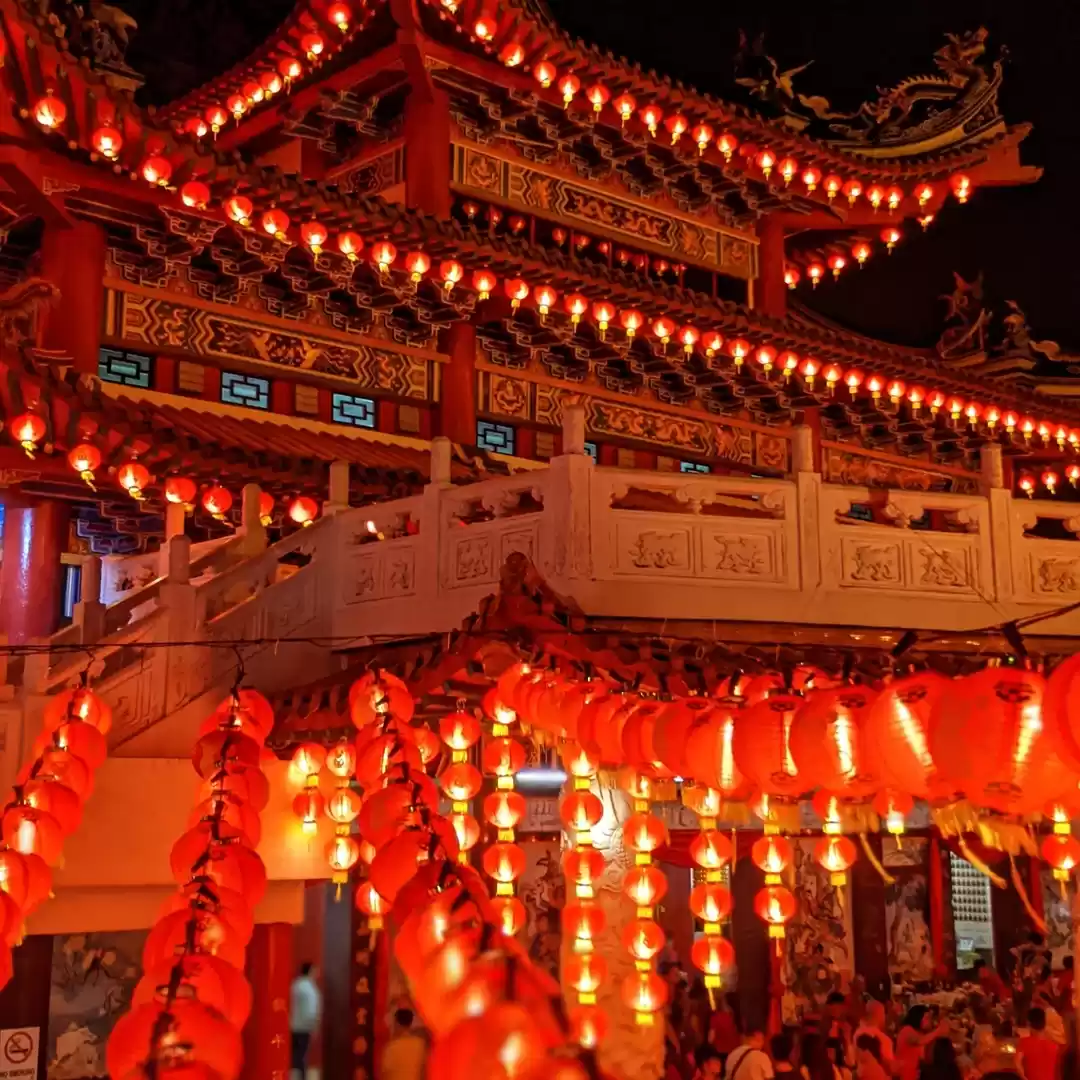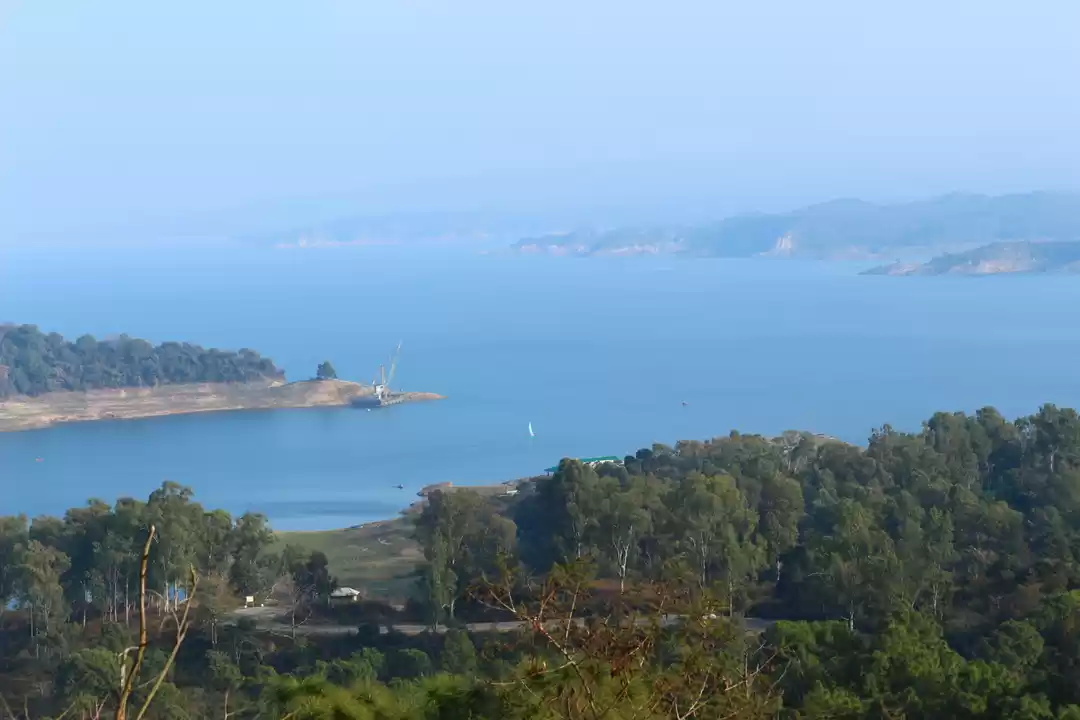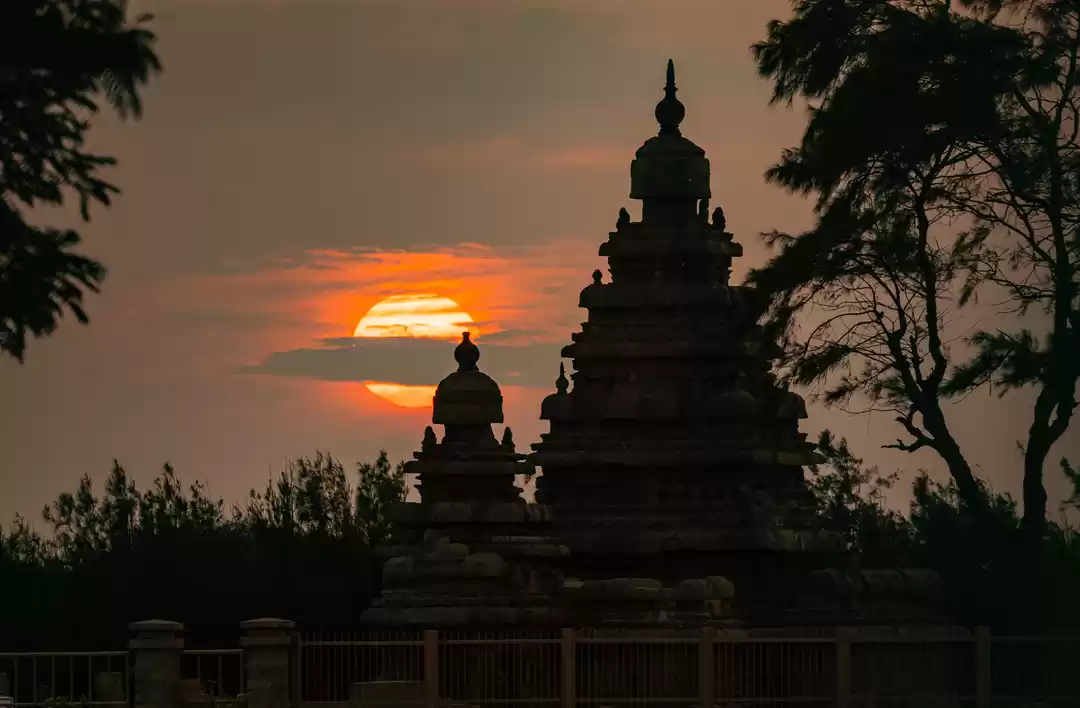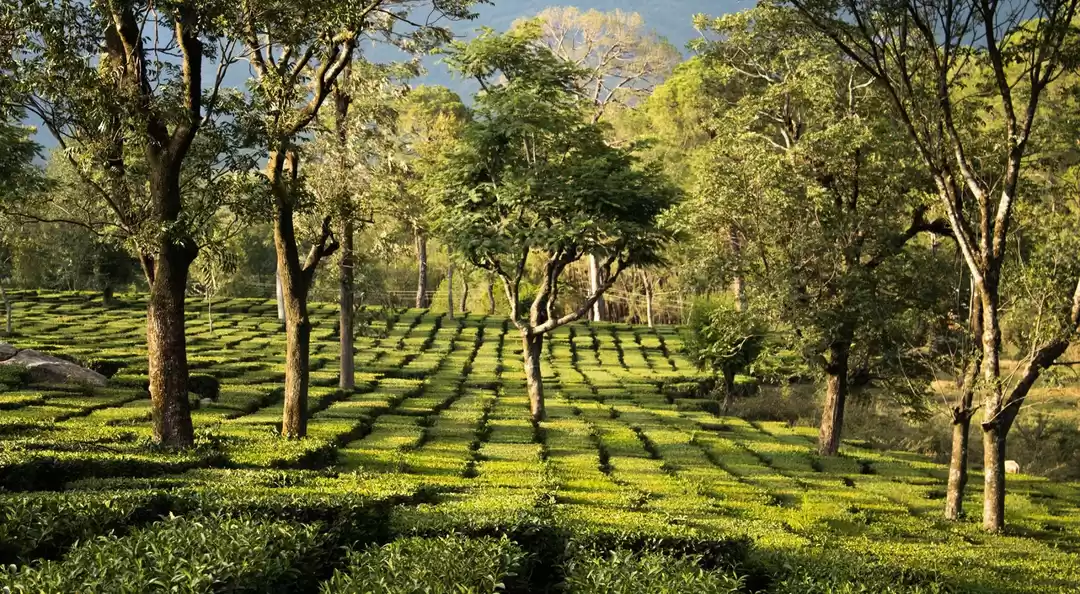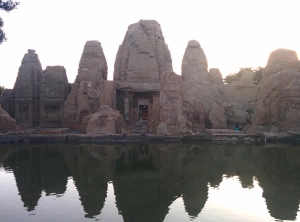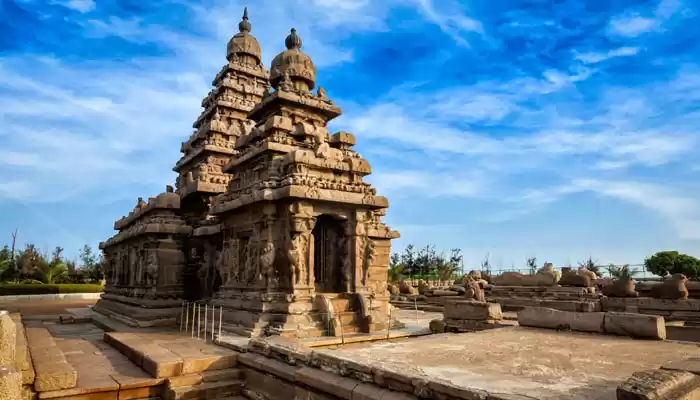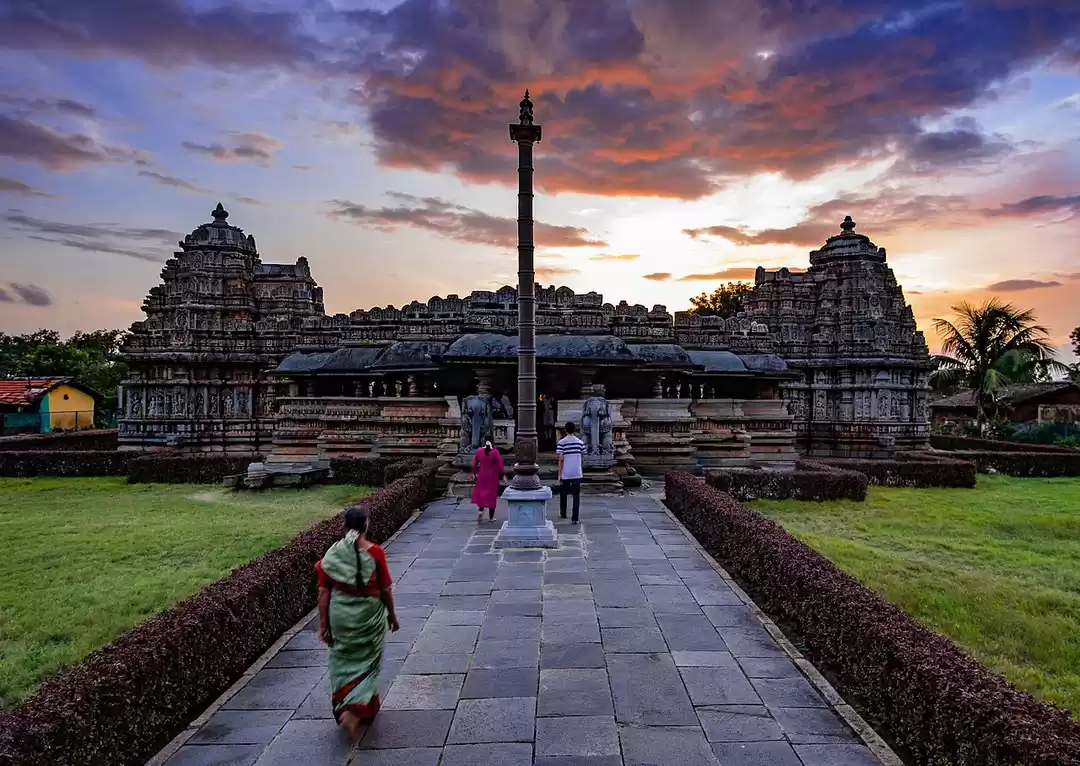Let me break the title and explain a little about the terms. Monolith means formed of a single large block of stone. And the monolithic rock-cut temples at Masrur (765m mean sea level) are excavated from a single sandstone ridge and are located about 48 km northwest of Kangra town via Gaggal in District Kangra of Himachal Pradesh. Now coming to Nagara style of architecture, Indian temples are basically three main styles of temple architecture and these are the Nagara (Northern style), the Dravida (Southern style) and the Vesara (mixed style) on the basis of construction. This small piece of writing is about Masrur rock cut temples, an infamous and unexplored site in Kangra. Historians say it was constructed somewhere in between 6th to 8th century, the exact time is not known because there is no inscriptional mention of the patronage or period of the construction on the temple itself.
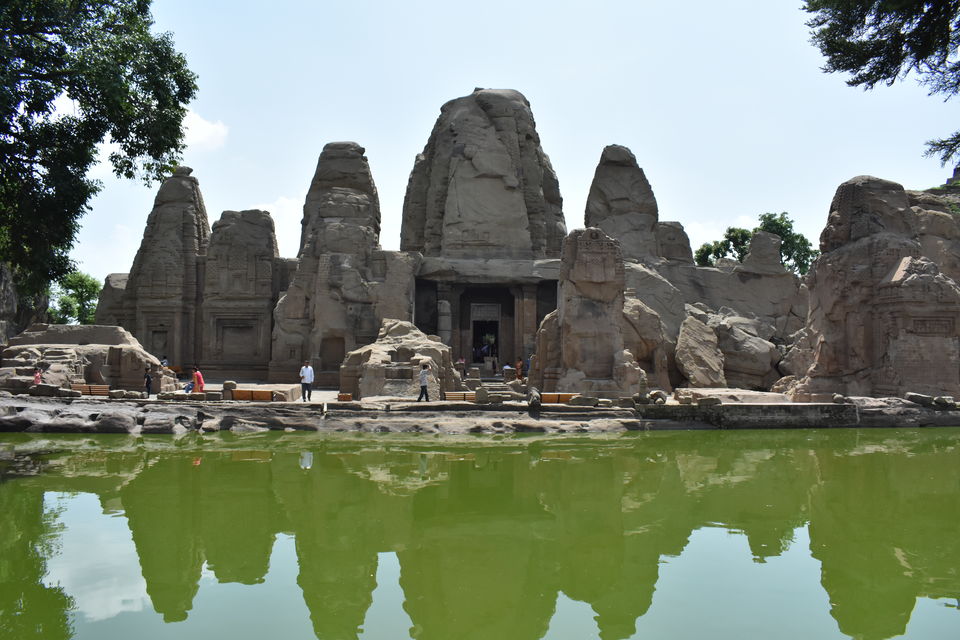
We traveled for about two hours, the distance between Palampur and Masrur is around 72 km. The weather was very humid and it was very uneasy. So when we arrived at the temple site, we took the entry tickets (15 Rs per head). As we entered the temple, a huge Jamun tree in its fruiting stage stood tall and it did seem like it has a story to tell. A portion of that tree was decayed and there was an earthen pot kept in that decayed part. Just perfect! The place has drinking water and a few shops around so you can shop for eatables. Let’s continue with the Masrur story.
So, the complex features a group of 15-24 (numbers are debatable) monolithic rock cut shrines; all shrines are cut from the outside except the central one, the central temple in this complex is also cut from the inside. This is the main temple and can be called as the 'garbha griha' (sanctum sanctorum) because it is made to house the main icon or deity. In front of these temples is a rectangular water reservoir on the east which remains water-filled all through the year and reflects a magnificent image of these temples.

The temple complex is now also known as Thakurdwara (an abode of Vishnu), a term for Vaishnavite temples because the idols of Rama, Lakshmana and Sita are placed inside main shrine. The idols are ancient and in front of the main temple is a Holy Basil plant and Shivling. The sculptures on the pillars, doors and other shrines seem to be figures of Gods and Goddesses along with floral art beautifully carved out in an intricate manner mainly Shiva on lintel on eastern doorway of the sanctum, the river goddesses Ganga and Yamuna on either side of the entrance doorway ( a feature of Nagara style temple), and elsewhere three faced Shiva, Skand, Ishan, Vishnu, Vaikuntha (Vishnu with additional head of a boar and a lion), human Varah (Vishnu incarnated in human form with boar head), Indra, Durga, Kartikeya, Surya on the horse drawn chariot, Buddha seated on simhasana, eight dikpalas (guardians of the directions), flying gandharavas with jewelled crowns, celestial musicians (the drum and veena players), the mithuna couple (amorous couple) etc. Besides, art motifs like flowers, foliage, pots etc.
According to local legend, the Pandavas of the Mahabharata fame resided here during their “incognito” exile (agyaat vaas) from their kingdom and built this temple. During this time, as their identity and location was exposed, they shifted from here. This is said to be the reason for the unfinished part of the temple complex. The pond in front of the complex has a mythical link to Draupadi, the consort of the Pandavas. It is stated that it was built for her exclusive use for ablutions. It is also being assumed that the complex was most probably is built by a paramount ruler of ancient Jalandhar kingdom of Punjab plains or by a Katoch ruler under the supremacy of Yashovarman, the king of Kannauj.

Kangra valley experienced a massive earthquake on 4th April 1905 which measured 7.8 on richter scale during which many of its shikharas fell down and many pillars developed cracks. A major portion of the temple is in ruin state with various fragments lying in the vicinity.

The magnificent structure built with a cruciform design bears striking similarity with the temple of Angkor Wat in Cambodia and Kailasa Temple at Ellora. Masrur Rock Cut temples are the only rock shrines in the northern part of India. Though rock-cut caves are common in South India, yet, temples cut out of free-standing rocks, known to archaeologists and art critics, are only 4 in number — Ratha of Mahabalipurum, Kailasha Temple at Ellora Caves, Temple complex at Masroor and the Dharmanatha Temple at Dharmnar. The Ratha and Kailasha Temple are built in the Dravidian style, whereas the Masroor & Dharmanatha ones are in the Nagara style of North India. But unlike the other three, Masroor stands on the top of the hill and it is the only example of Nagara style temple built as the rock-cut construction. Since Nagara style of temples are mostly built as masonry construction while rock-cut temples are mostly cave temples.

Masrur temple is also called ‘The Himalayan Pyramids’. The temple complex is picturesque and is touristy. It also has some staircases to a more elevated area, where there are public washrooms but apart from that the view of the entire valley on all your sides is just breathtakingly awesome!



Do's and Don'ts
1. Plan your trip during non humid weather.
2. Do not scribble on the buildings
3. Do not litter and enjoy!
Information source:
ASI
http://www.mysteryofindia.com/2015/12/rock-cut-temples-masroor.html



